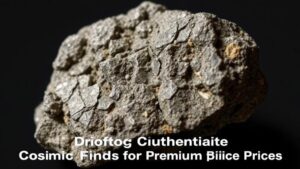Investigating the salt flats of Utah for unique crystalline structures formed by evaporation.
Investigating the Salt Flats of Utah for Unique Crystalline Structures Formed by Evaporation
The salt flats of Utah, particularly the Great Salt Lake and the Bonneville Salt Flats, present a geological wonderland rich in unique crystalline structures formed through the process of evaporation. For rockhounds and mineral collectors, these areas are treasure troves of fascinating minerals and spectacular formations that offer insights into the Earths geological processes. This article will explore the formation of these structures, the types of minerals found, and practical tips for interested collectors.
The Geological Formation of Salt Flats
Salt flats are formed primarily through a process known as desiccation, where bodies of water evaporate, leaving behind highly concentrated mineral deposits. In the case of Utahs salt flats, the Great Salt Lake is a remnant of the ancient Lake Bonneville, which existed during the last Ice Age. When water evaporates, it leaves minerals in a layered pattern, primarily consisting of sodium chloride (table salt), but also other mineral varieties.
These formations are not merely flat expanses. They can range in texture and color based on the minerals present, and they often exhibit unique crystalline structures. Studies indicate that the evaporation process can lead to intricate growth patterns, which can vary in size from microscopic to several inches across. For example, at certain locations, one may find hygroscopic minerals such as halite (NaCl), epsomite (MgSO₄·7H₂O), and thenardite (Na₂SO₄) whose crystals can resemble clear or vivid formations.
Types of Minerals Found
Utahs salt flats are home to a variety of mineral deposits that attract both amateur and seasoned collectors. Some of the notable minerals include:
- Halite: This is the most prominent mineral found in salt flats and characterized by its cubic crystals. It is essential for collectors due to its purity and interesting light refraction properties.
- Epsomite: These white to colorless crystals can form through the evaporation of magnesium-rich waters, creating beautiful radiating patterns.
- Thenardite: These flat, tabular crystals appear as transparent to white and are often found in thin layers interspersed with other minerals.
- Glauberite: A double salt of sodium and calcium sulfate, this mineral can form unique rosette-shaped clusters.
Scientific Data and Measurements
The evaporation rate of the Great Salt Lake plays a crucial role in the formation of these minerals. The lake loses approximately 1.0 meter of water per year due to evaporation, largely influenced by its low altitudes and high temperatures. The salinity of the lake is about 8 to 10 times saltier than the oceans, which significantly contributes to the variety and abundance of crystalline formations found.
Chemical analysis and x-ray diffraction studies have shown that mineral families present in the flats can reflect the conditions of the evaporative environment, such as pH levels and the presence of various ions, including sodium, calcium, and magnesium.
Practical Tips for Rockhounds and Collectors
For those aspiring to explore and collect from Utahs salt flats, consider the following practical tips:
- Safety First: Ensure to wear protective footwear, as salt flats can be sharp and rugged. Bring plenty of water, as the desert environment can be dehydrating.
- Collect Responsibly: Be conscious of the ecological impact. Collect small specimens and avoid disturbing large areas of the environment.
- Use Proper Tools: Essential tools such as a hand trowel, brushes, and a sturdy collection box can help you efficiently gather and preserve your finds.
- Document Your Finds: Keep a detailed log of the locations and conditions of your collections to build a personal database of mineral types found.
Real-World Applications
The minerals collected from Utahs salt flats have various applications in industries such as agriculture, chemical manufacturing, and pharmaceuticals. Halite, for instance, is extensively used as a road de-icer, while epsomite is utilized in agriculture as a magnesium sulfate additive. Understanding the commercial value of these minerals adds an additional layer of intrigue for collectors, potentially leading them to explore not just for beauty, but for practical application as well.
Conclusion
Utah’s salt flats are breathtaking geological phenomena that provide rockhounds and mineral enthusiasts with a unique opportunity to discover fascinating crystalline structures. By understanding the formation processes, types of minerals available, and practicing responsible collecting, enthusiasts can appreciate the remarkable beauty and scientific significance of these environments while contributing to their personal collections. Whether delving into the aesthetic aspects or the industrial applications, the salt flats offer many avenues for exploration and discovery.



